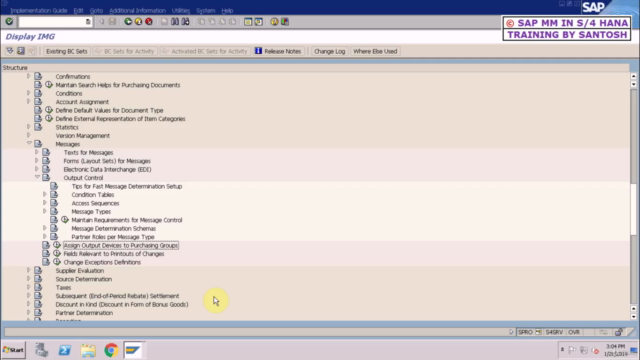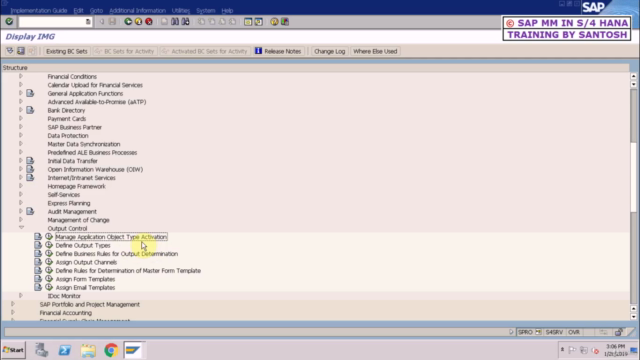Learn SAP MM With Functional Changes in S/4 HANA - Part 3
Learn SAP MM Configurations in detail
4.35 (51 reviews)

239
students
7.5 hours
content
Jun 2021
last update
$19.99
regular price
Why take this course?
-
Initial Setup of SAP for Procurement to Payables (P2P) Cycle
- Understand the P2P cycle in SAP, including the key modules involved such as Purchase Requisition (MEPP), Purchase Order (MKPF), Goods Receipt (MATMA), Invoice Verification (FB5B/FIOL), and Payment (FSMD).
- Configure master data for vendors, materials, and purchase requisition types.
- Set up user roles with the necessary authorizations for different users in the P2P process.
- Establish interfaces for electronic data interchange (EDI) if applicable, to automate the exchange of documents with suppliers.
-
Goods Receipt and Invoice Verification
- Understand how to receive goods against purchase orders and record quantities, conditions, and issues using transactions like MATMA, GRAIN, and MAKR.
- Learn how to verify received invoices with the corresponding goods receipts (FIOL transaction).
- Configure and manage internal controls for invoice verification to prevent fraud.
-
Invoice Verification and Payment
- Understand the steps involved in complete and partial invoice confirmations, as well as mass processing of invoices (FB51 transaction).
- Set up payment runs and understand the payment terms and conditions (FSMD transaction).
- Learn about different payment methods such as cheques, direct debit, or electronic transfers.
-
Settlement of Open Items
- Identify open items that need to be settled through the "Open Items" report (FB60 transaction).
- Analyze outstanding payments and receipts to ensure accuracy in settlements.
- Process accruals or reversals as necessary.
-
Reporting and Analytics
- Utilize standard SAP reports like the Material Ledger (SOII) for inventory valuation, or CORE_CARDEX for purchase order and receipt statistics.
- Create custom reports using transaction code SE38 or BODI if necessary to extract specific data relevant to your organization's needs.
- Implement SAP BusinessObjects or SAP Analytics Cloud for more advanced reporting and analytics.
-
Managing Inventory and Material Master Data
- Maintain material master data, including procurement information and inventory management data (MM02 transaction).
- Understand the concepts of batch management (BMKX transaction) to manage perishable goods or items with expiration dates.
- Configure inventory management parameters such as valuation class, storage location, and material number range.
-
Managing Vendors
- Set up vendor master data (VBV transaction).
- Manage purchase requisitions and orders (MEPP transaction).
-
Compliance and Internal Controls
- Ensure compliance with local regulations and internal control frameworks.
- Implement segregation of duties to prevent fraud or errors.
-
Integration with Other Modules
- Integrate procurement processes with other relevant SAP modules such as Financial Accounting (FI), Controlling (CO), or Logistics (LL).
- Understand how to handle returns, exchanges, and credit notes within the P2P cycle.
-
BPC for Procurement
- Explore Business Planning and Consolidation (BPC) for procurement to streamline processes, improve cost visibility, and gain insight into procurement spending patterns.
-
Robotics Process Automation (RPA)
- Implement RPA using tools like SAP Intelligent Robotic Process Automation (IRPA) to automate repetitive tasks in procurement.
-
User Experience
- Optimize the user experience with personalized dashboards using SAP Fiori 2 UI or SAP Business Client. By following these key areas, you can ensure a comprehensive setup of SAP for Procurement to Payables (P2P) cycle, which will enable your organization to efficiently manage its procurement processes, from the initial purchase requisition to the final payment to vendors. Remember that SAP configurations can vary significantly based on the specific business process and the industry you are in. Always tailor these best practices to fit your company's unique needs and legal requirements.
Course Gallery




Loading charts...
Related Topics
4120270
udemy ID
13/06/2021
course created date
24/03/2024
course indexed date
Bot
course submited by